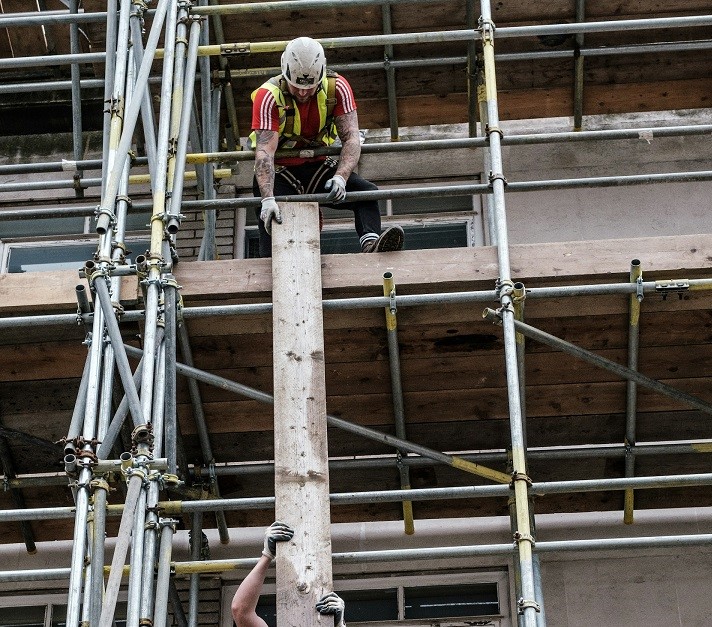
When it comes to scaffolding solutions, versatility, strength, and adaptability are essential. Tube and clamp scaffolding is one of the most reliable and flexible scaffolding systems available, making it a popular choice for construction, industrial maintenance, and other high-access projects. In this comprehensive guide, we’ll explore what tube and clamp scaffolding is, its benefits, its applications, and how it compares to other scaffolding systems.
What is Tube and Clamp Scaffolding?
Tube and clamp scaffolding, also known as tube and coupler scaffolding, is a temporary structure made of steel or aluminum tubes connected by clamps or couplers. Unlike modular scaffolding systems, which rely on prefabricated frames, tube and clamp scaffolding allows for custom configurations, making it suitable for complex and irregular structures.
Key Components of Tube and Clamp Scaffolding
- Tubes: These are the main structural elements, usually made of steel or aluminum.
- Clamps/Couplers: Used to join the tubes at various angles, allowing for greater flexibility.
- Base Plates: Provide stability and distribute weight evenly.
- Bracing and Diagonal Supports: Enhance structural integrity and stability.
- Planks and Platforms: Create walkways and work surfaces for laborers.
Benefits of Tube and Clamp Scaffolding
1. Versatility
Tube and clamp scaffolding is one of the most adaptable scaffolding systems. It can be used in a variety of environments, including industrial sites, refineries, shipyards, and construction projects with irregular building structures.
2. High Load Capacity
Since it is constructed using heavy-duty steel tubes, tube and clamp scaffolding can support substantial loads, making it ideal for projects requiring significant material storage or multiple workers on the platform.
3. Customizable Design
Unlike pre-engineered modular scaffolding, tube and clamp scaffolding can be assembled in any shape or configuration. This flexibility is crucial for projects where standard scaffolding won’t fit.
4. Durability
Constructed from galvanized steel or aluminum, tube and clamp scaffolding is highly durable, resistant to rust, and capable of withstanding extreme weather conditions.
5. Suitable for Confined Spaces
This scaffolding system can be erected in confined or restricted spaces where other scaffolding types may not be practical.
Applications of Tube and Clamp Scaffolding
Tube and clamp scaffolding is widely used in various industries due to its flexibility and strength. Some common applications include:
- Construction: Supports workers and materials during the building process.
- Industrial Maintenance: Used in power plants, refineries, and factories for maintenance work.
- Shipbuilding: Ideal for working on complex ship structures.
- Bridges and Tunnels: Provides access to areas that require customized scaffolding.
- Historical Building Restoration: Works well with structures that require non-standard scaffolding setups.
Tube and Clamp Scaffolding vs. Other Scaffolding Types
| Feature | Tube and Clamp Scaffolding | Frame Scaffolding | System Scaffolding |
|---|---|---|---|
| Flexibility | High | Low | Medium |
| Load Capacity | High | Medium | High |
| Ease of Assembly | Moderate | Easy | Easy |
| Durability | High | Medium | High |
| Customization | High | Low | Medium |
Safety Considerations for Tube and Clamp Scaffolding
Ensuring worker safety is paramount when using tube and clamp scaffolding. Here are some key safety measures:
- Proper Training: Workers should be trained on safe assembly and disassembly.
- Regular Inspections: Conduct frequent checks for loose clamps, weak joints, and damaged tubes.
- Load Limits: Adhere to weight limits to prevent overloading and collapse.
- Use of Personal Protective Equipment (PPE): Workers should wear helmets, harnesses, and non-slip footwear.
- Secure Foundations: Base plates must be firmly positioned on stable ground.
Frequently Asked Question(FAQs)
- What makes tube and clamp scaffolding different from other scaffolding systems?
Tube and clamp scaffolding offers unmatched flexibility, allowing it to be configured into virtually any shape. This makes it ideal for non-standard structures, unlike modular or frame scaffolding.
- Is tube and clamp scaffolding more expensive than other scaffolding types?
While the initial setup may require more labor and materials, its durability and versatility often make it a cost-effective solution for long-term or complex projects.
- How long does it take to assemble tube and clamp scaffolding?
Assembly time depends on the complexity of the structure. Simple scaffolding setups may take a few hours, while more intricate designs could take days.
- Can tube and clamp scaffolding be used in all weather conditions?
Yes, the galvanized steel or aluminum construction makes it resistant to corrosion, allowing it to withstand harsh weather conditions, including rain, snow, and extreme heat.
- Is tube and clamp scaffolding reusable?
Yes, one of its biggest advantages is reusability. The components can be disassembled, transported, and reassembled at different job sites, making it an economical choice for multiple projects.
Conclusion
Tube and clamp scaffolding is a versatile, durable, and highly adaptable scaffolding solution that meets the needs of various industries. Whether you’re working on construction sites, industrial maintenance, or historical restoration, this scaffolding system provides exceptional support and flexibility.
For those in need of expert scaffolding solutions, G & R Insulating and Scaffolding offers professional assembly, dismantling, and scaffold planning services tailored to your project’s specific requirements. Contact us today for a quote, or visit our website www.grinsulating.com to learn more.